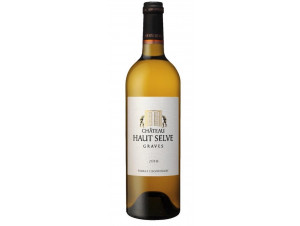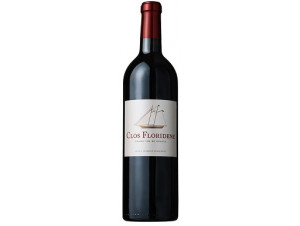You have no items in your shopping cart.
Wine Graves
They are the only wines in France to bear the name of their terroir. The Graves of Bordeaux are the very illustration of a strong link between the expression of the soil and the quality of a wine. The Graves appellation produces blended wines that come in three styles, the red Graves, the white Graves and the superior Graves, which are sweet whites. Read more on Graves
-
Top Selling-25%
-
Top Selling-25%
-
Top Selling
- -16%
- -10%
Appellation Graves
The wines of Graves expanded during the time of Duchess Eleanor of Aquitaine
The Graves vineyard is often referred to as the dean of Bordeaux vineyards. The presence of the vine there has been attested for over 2000 years.
However it is really in the Middle Ages during the English domination of the territory that the appellation will experience its first golden age. This great expansion began in 1152 following the marriage of the duchess Eleanor of Aquitaine to Henry II Plantagenet. By becoming Queen of England, Eleanor of Aquitaine made it possible to promote trade between Bordeaux and London. As such, the local bourgeoisie achieved the coup de force of what historians refer to as the "privilege of the wines of Bordeaux", allowing them to be guaranteed against any external competition in the wine trade.
The turn of the 18th century sounded like a renaissance for a quality viticulture. The Graves vineyard is part of this dynamic. The latter experienced a second golden age during which England discovered the "new French claret", a wine made from a longer fermentation and with titration considered higher than the traditional clarets.
In the 18th century, the wines of Graves could also boast an illustrious ambassador in the person of Montesquieu. A free thinker, philosopher and politician, he was nonetheless an owner-winemaker of the Graves region. A lover of the vine and wine, Montesquieu greatly contributed to the influence of the vineyard of Graves in France and England.
The end of the 19th century was marked by a period of successive wine crises linked to diseases of the vine and in particular oidium, mildew and phylloxera. The vineyard of Graves did not escape these plagues. A period of reconstruction of the vineyard then began, marked by a real desire to be even more involved in the defence of the terroirs and know-how linked to the territory of Graves. This reconstruction will lead to the recognition by decree of the appellation d'origine contrôlée "Graves" and "Graves supérieures" on 4 March 1937.
Graves wines are characterised by their soils composed of gravel
.The Vignoble des Graves covers 3500 hectares, it covers a large territory of 60 km long and 10 km wide that goes from Bordeaux to Langon. One of the particularities of this vineyard is moreover to be partly urban. Indeed, we can notably cite as examples three prestigious vineyards whose vines are located in the urban area of Talence and Pessac: Chateau Haut-Brion, Chateau Pape Clément and Chateau la Mission Haut-Brion.
Surrounded by the Garonne River and the Landes forest, the Vineyard of Graves has an ideal climate, influenced by the Atlantic Ocean. The vines are protected from excess heat by the pine forest and the temperature is regulated by the presence of water.
The soil composed of gravel, sand and clay makes the richness of the appellation, which has adopted its name. Indeed, "gravas" in Occitan Gascon means "grave". Organised in the form of terraces, this soil allows natural water drainage and heat restitution.
The main red grape varieties are Merlot, Cabernet Sauvignon and Cabernet Franc, although it is possible to find some malbec and petit verdot plants. In whites, the characteristic grape varieties of Graves are Sémillon and Sauvignon Blanc sometimes complemented by Sauvignon Gris and Muscadelle.
The yield of the red and white wines of the Graves vineyard averages 50 hectolitres per hectare of vines.
Graves wines produce wines of 3 colours
The Graves appellation produces three styles of wine, reds, whites and sweet whites. The Red Graves are very representative of the wines of Bordeaux. They often have a dark colour, ranging from ruby to purple. On the nose their bouquet is marked by notes of red fruit nuanced with floral notes on violets and slightly smoky notes. With age, it is also possible to discover gamey aromas, notes of spices, mocha or roasting. On the palate, the red Graves offer a beautiful tannic structure. The tasting lets you appreciate a clever balance between power and roundness.
The Red Graves have an ageing potential of 5 to 15 years. They are best enjoyed at a temperature of between 15 and 17°C.
The White Graves are dry white wines. They have a pale yellow colour with green and sometimes golden highlights. The characteristic bouquet of white Graves is expressed through aromas of citrus, exotic fruits, or even flowers. On the palate, the white Graves reveal a natural fatness not devoid of a beautiful freshness. Both fresh and perfumed, they have a lively finish. The white Graves can be kept for 5 to 7 years. They are best drunk at a temperature of 10 to 12°C.
Graves Supérieures are sweet white wines. They are made from grapes harvested when overripe which gives them that characteristic sweetness. They present a beautiful golden colour. On the nose, they offer a greedy bouquet of citrus, candied zest, notes of yellow-fleshed fruit and honeyed nuances. On the palate the wines are dense with a beautiful volume that presents a perfect balance between sweetness and acidity. Very harmonious, they offer a long and sapid finish. The Graves Supérieures have an ageing potential of up to 10 years. They are best drunk at a temperature of 8 to 10°C.
What dish to accompany a Graves?
Graves wines by their varied styles offer a wide range of food and wine pairings. Generally speaking, the Red Graves are considered the perfect allies to accompany a red meat dish, for example an entrecote of Bazas beef or a wild duck with bigarade. They will also perfectly accompany a cheese platter.
As for the White Graves, they will be able to enhance a basket of Oysters from the Arcachon basin, fish cooked in sauce or even poultry marinated in citrus fruits. Finally, the Graves Supérieures are the allies of the tasting of a foie gras. They can also be served with grilled fish or fish marinated in spices. They are also a perfect accompaniment to a fresh fruit dessert, such as a lemon meringue pie.
Bordeaux appellations








































 TWIL - Achat de Vin
TWIL - Achat de Vin


